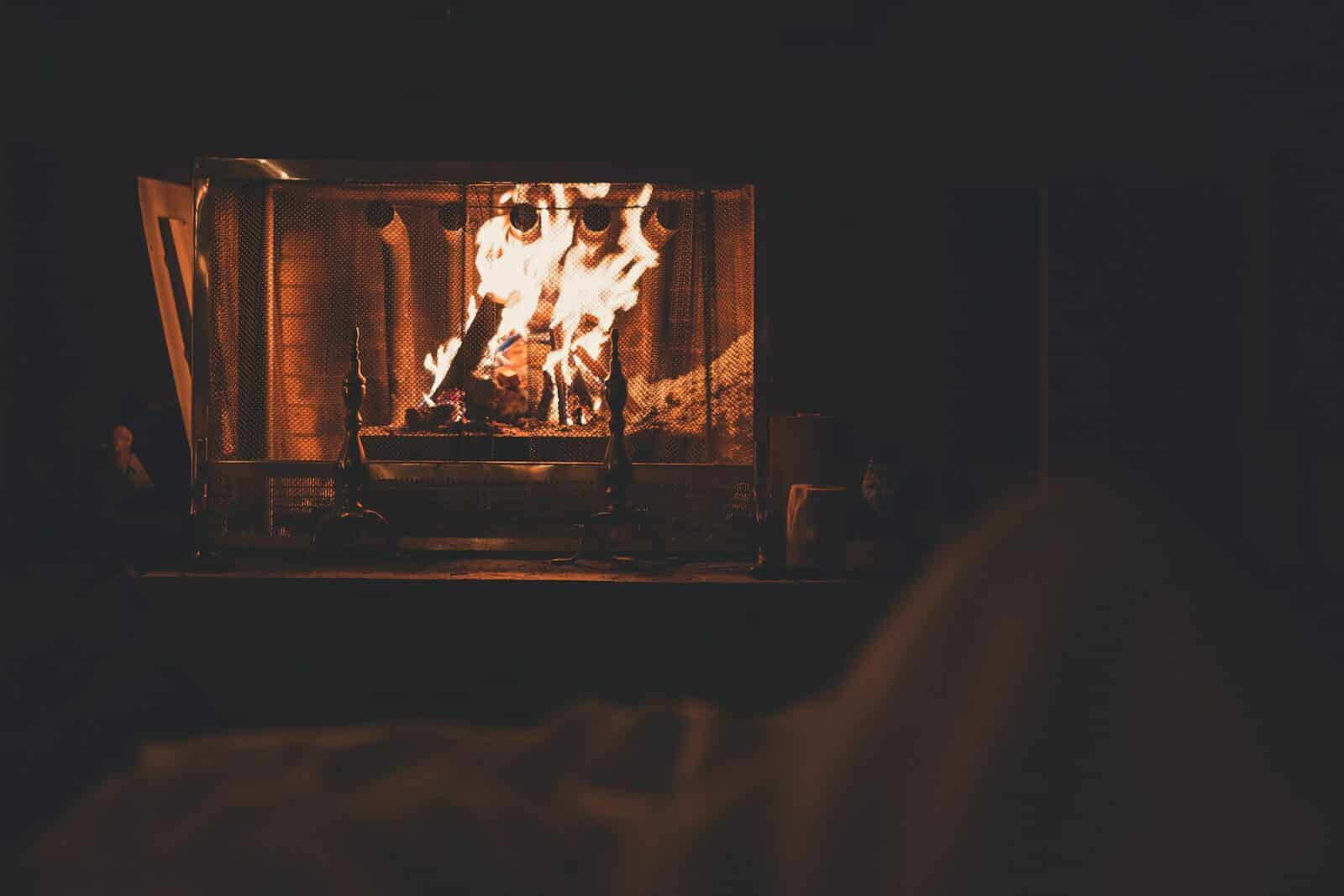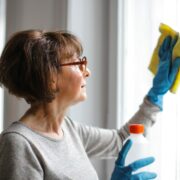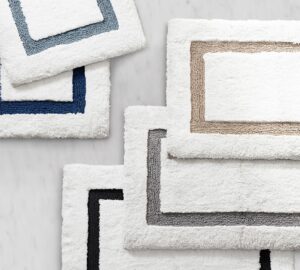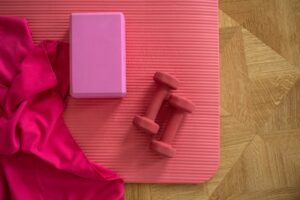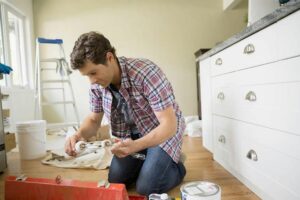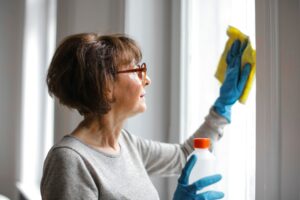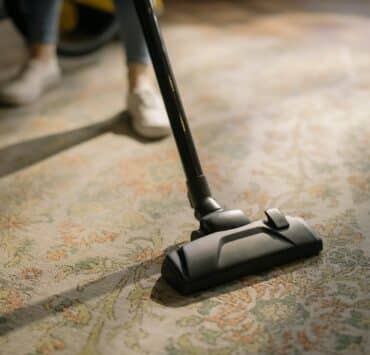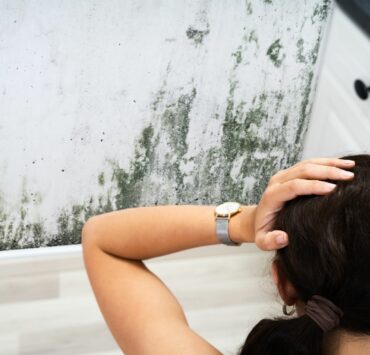Cleaning your chimney yourself can save you hundreds of dollars if you’re willing to put in the work yourself. With the right cleaning and protective gear, homeowners can clean their own chimneys and keep it working well. Here’s everything you must know about cleaning a chimney.
[ez-toc]Cleaning Up Creosote
If you need a reason to be on top of chimney cleanliness, it would be a creosote.
Creosote is a tar-like substance made from trapped smoke, soot and ash buildup. This buildup creates toxic vapors that are hazardous to your health. Creosote has been marked as a probable carcinogen and long-term exposure has been shown to cause lung, kidney and brain problems. On top of that, creosote is one of the main culprits behind chimney fires.
Creosote can’t be avoided for wood fireplaces because it’s a natural by-product of burned wood. This is why it’s essential to regularly maintain your chimney’s cleanliness. Keep an eye out for shiny and hard build-up, drippy and sticky tar, or black crusty flakes.
When cleaning your chimney, removing the creosote should be the main priority. Use the following steps as a guide on how to clean up your chimney.
What You’ll Need to Clean a Chimney
- Drop cloth
- Sheet plastic
- Tape
- Safety goggles
- N95 Mask
- Work gloves
- Cordless drill
- Extension rods (2-3)
- Chimney sweeping brush, large and small
- A flashlight
Protect Your Home
First, seal up the fireplace using sheet plastic. Measure out the sheet plastic accordingly so you can fully cover and tape down your fireplace. Doing this should block out most or all debris that gets dislodged while cleaning up the chimney.
This is an optional step, but we recommend it. You need to protect your fireplace hearth and the immediate surrounding area. This should account for any stray particles that may float out of the fireplace. Simply line the area with a waterproof drop cloth. If you decide to clean your fireplace after you’ve cleaned your chimney, the drop croth will come in handy to catch spills.
Protect Yourself
Cleaning your chimney requires you to go up to your roof and expose yourself to creosote and other kinds of buggy build-up. Protective goggles, sturdy work gloves and an N95 mask are essential to protect yourself while you clean.
This prevents you from inhaling flyaway particles, especially while scrubbing down your chimney. If you don’t have the proper protective gear to clean your chimney, go and get them or call a contractor instead.
Remove The Chimney Caps
Once you’ve climbed onto your roof and have all your cleaning and protective gear set up, remove the chimney caps. Use a cordless drill to remove the screws. Stash the screws away from your immediate work area.
Once you’ve removed the chimney caps, you should have a clear space to run your chimney brush down and get to work.
Scrub The Chimney
Attach your chimney sweeping brush to an extension rod. Run the brush down through your chimney and get scrubbing. Do this systematically. Scrub from the top and work your way down. Add more extension rods as needed as you go deeper into your chimney. Stop brushing when you reach the smoke shelf.
Once you’ve reached the smoke shelf, systematically work your brush back up again.
Check Your Chimney
Check to see how clean your chimney is by shining a flashlight down. Deal with missed spots by running the chimney brush down again until your chimney is completely clear. When you’re satisfied with your work, screw back on the chimney caps.
Don’t waste your energy trying to scrub off hardened build-up. For any stubborn build up that won’t come off, we recommend calling a professional. Many providers vary their prices based on how much build up they need to deal with as opposed to charging for the entire chimney.
Cleaning up your chimney initially and leaving the remaining hard bits to professionals should save you a few hundred dollars.
Clean The Fireplace
Give yourself a little break before getting to work on the fireplace. This allows all the debris you’ve cleaned up to gather and settle.
When you’re ready, slowly peel away the plastic sheet. Catch as much loose debris as can while you unpeel the plastic sheet. Fold up the plastic sheet, enclosing as much debris as you can, and throw away the plastic sheet.
Now that the fireplace is open, run up the chimney sweeping brush as far into the chimney as you can. Vacuum up all the dislodged fallout up the chimney and around your fireplace.
If you’re willing to put in the time, follow the above steps to clean your brick fireplace.
When To Call A Professional
The average DIY’er is perfectly capable of cleaning their chimney. For safety reasons as well as for a job-well-done, we recommend hiring a contractor to clean your chimney if you face any of the following issues:
- You don’t have the appropriate cleaning tools or safety gear
- You’re not confident or accustomed to accessing your roof
- Your chimney is still dirty even after brushing it. This would be creosote residue that won’t come off. This residue can be identified as flakes that won’t brush off or are hard and shiny.
- Your chimney is damaged. Call a professional if you find cracks, eroded areas, or any signs of breakage on your chimney.
Professional chimney sweeping can range from $80 to $300 depending on how much build-up needs to be cleaned up. For more stubborn build-up, like hardened creosote, a professional cleaning can cost up to $800 as special chemicals will be needed to break down the creosote.
Best Time To Clean A Chimney
Use your time efficiently for a laborious task by timing your chimney cleaning when it will count most. Cleaning your chimney is most worthwhile just as fall begins as this is likely when fireplaces will be more frequently used. Cleaning your chimney beforehand is always a good idea as you spend more time indoors throughout fall and winter.
Whether you do it yourself or get it done by professionals, chimney cleaning isn’t just for the sake of cleanliness, it is also for your home’s improvement. It is also a health and safety issue. Get it done and get it done right so you can safely enjoy a cozy fire each and everytime.
